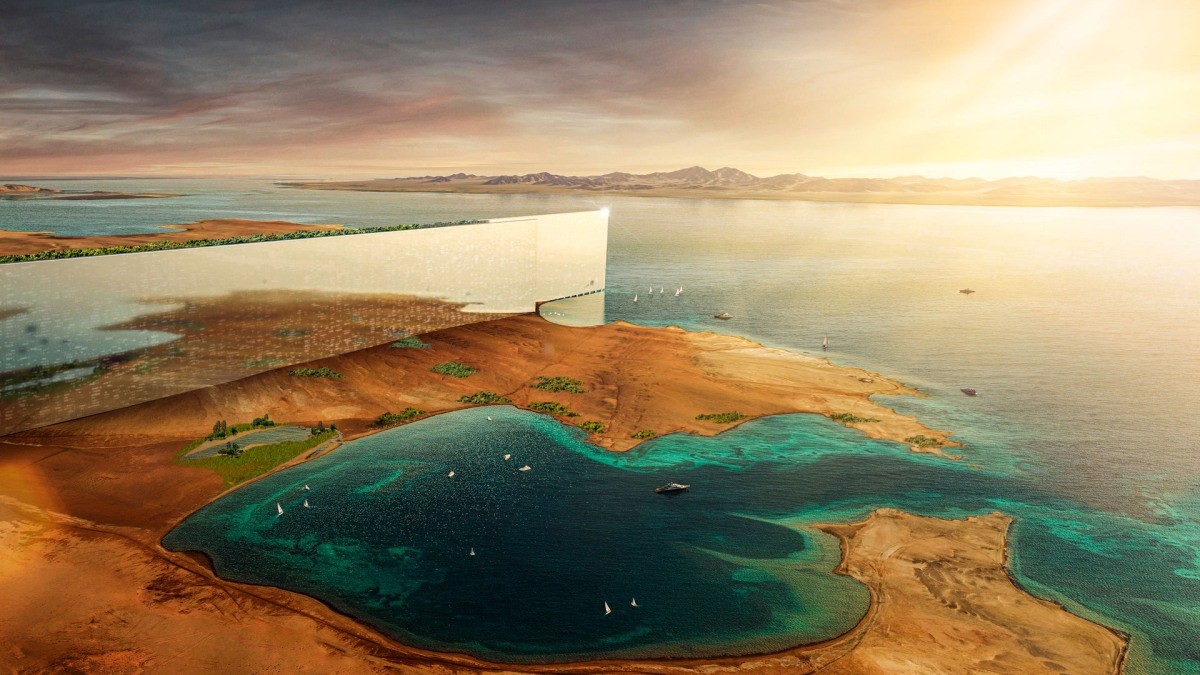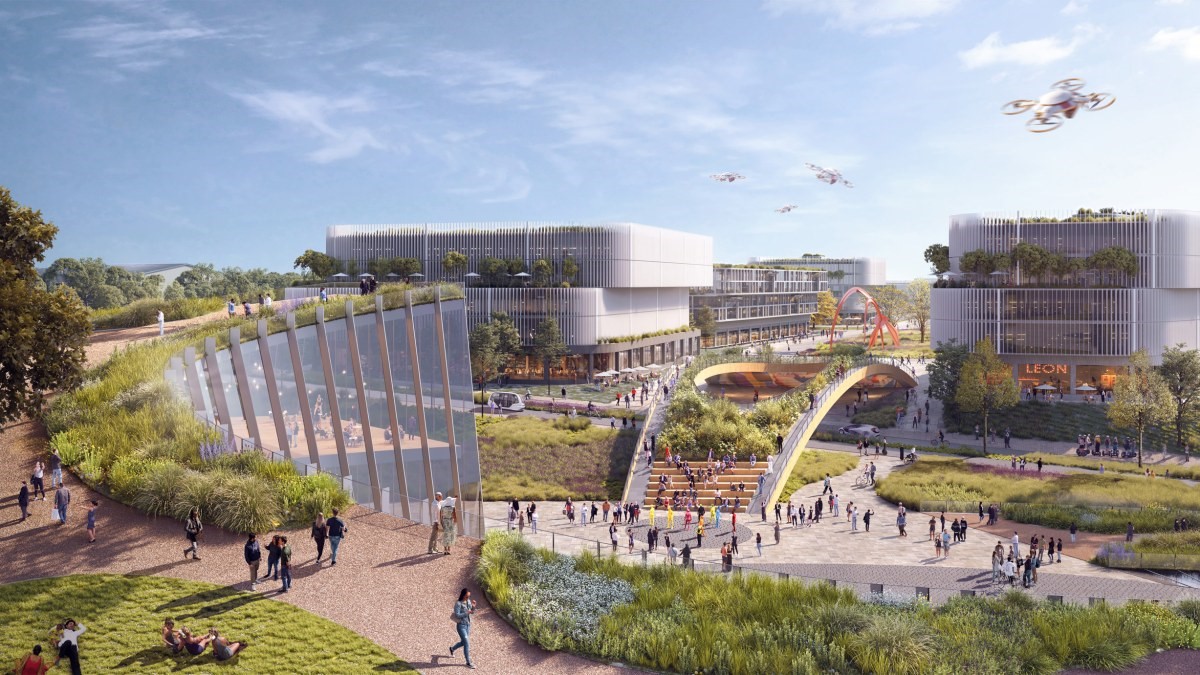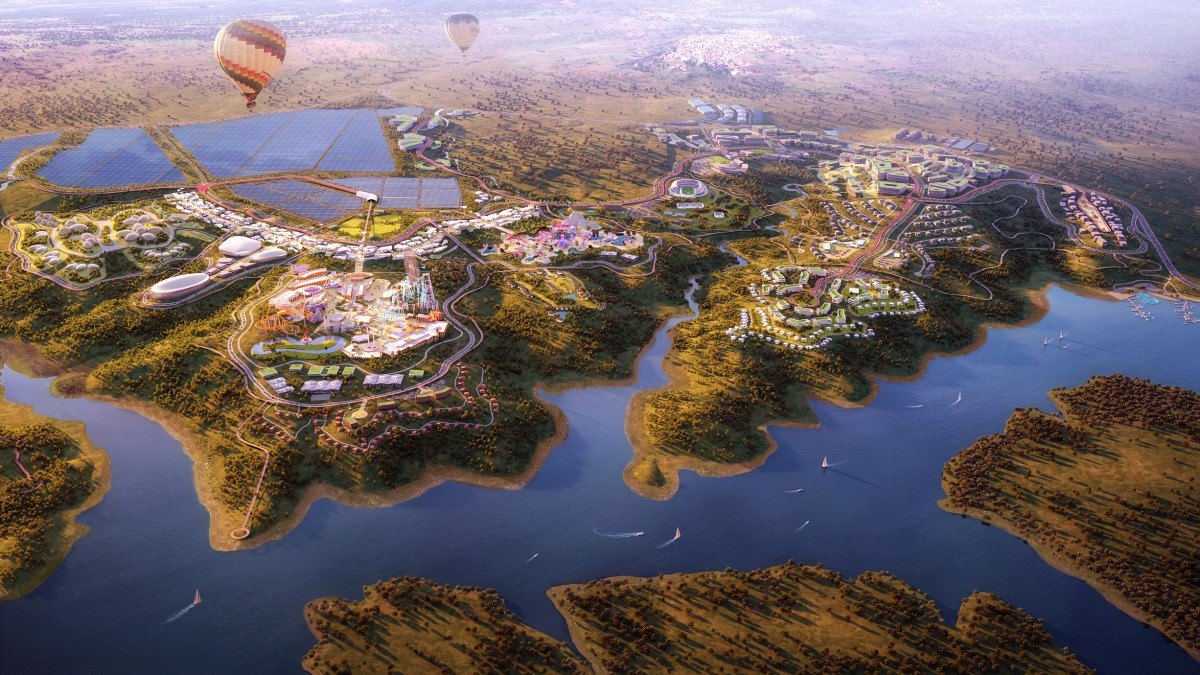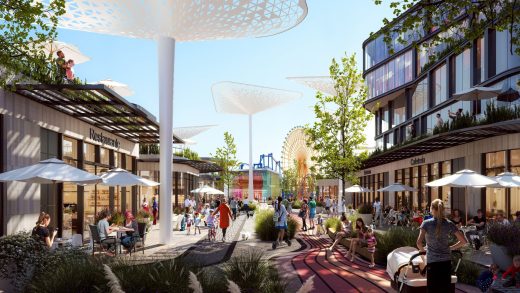Spain is building a city from scratch. Can it avoid the mistakes of Saudi Arabia’s line-shaped metropolis?
The Old World, otherwise known as Europe, is getting a brand-new city. Not a new arrondissement on the edge of Paris, or a new neighborhood in the suburbs of Milan—but an entire city, built from scratch on the jagged edge of a reservoir, some 2.5 hours southwest of Madrid.
Elysium City, as it is called, is billed as Europe’s first circular city to be built from the ground up, following a masterplan by global architecture firm Gensler. It will span 2,900 acres (about 4.5 square miles) and is expected to be completed in 20 years, with the first phase opening in about 5. The project received construction permits earlier this year and is expected to break ground any day now. It will cost just shy of $20 billion.
Before we go any further, you won’t be blamed for drawing parallels between Elysium and Neom, Saudi Arabia’s line-shaped aberration that is slowly taking shape deep in a desert bordering the Red Sea. Both cities are being planned on a patch of land that was previously untouched (though in Spain, the landscape is a little more forgiving). Both are described as sustainable havens with solar farms, a rail network, and electric vehicles. And weirdly, despite having nothing to do with Greece, both names share ancient Greek roots (Elysium means “paradise”; Neom from the Greek prefix, neo, and an Arabic abbreviation for “future,”essentially means “new future”).
Of course, Neom has been steeped in criticism and controversy from day one, while Elysium hasn’t yet been skewered by international media. But before the first road has even been laid, Elysium City may have already succeeded where Neom has failed: It promises to work with nature, not against it.

If you’ve heard of Elysium in the past, then you probably remember that it all started as a radically different concept. Back in 2018, Elysium was promoted as “Eurovegas”—a shiny extravaganza made up of luxury hotels, casinos, theme parks, and shopping centers. “It looked like a Las Vegas,” says Carlos Cubillos, the design director and principal at Gensler, who eventually led the new masterplan.

And then, as it goes, the pandemic hit. Cubillos was on a beach walk with his family in Costa Rica, where he was based at the time, when he got a call from Francisco Nuchera, the developer of “Eurovegas.” Nuchera had heard of Gensler’s urban design work and wanted to know if Cubillos would design a brand-new masterplan for this plot of land he had bought in Extremadura. “He’d previously wanted to create another magnet for tourism and entertainment development outside of [Spain’s Costa del Sol], kind of like what Las Vegas did in the United States,” says Cubillos. But suddenly, it all seemed futile. “He was very concerned that after the pandemic, people were not going to value that.”

And so “Eurovegas” became Elysium. Gensler devised a brand-new masterplan with a city center, a marina, a sports facility, a center for research—and yes, luxury hotels and casinos. The new city is to be powered from three photovoltaic plants spanning 260 hectares (about 640 acres). All internal mobility will be limited to electric vehicles and micromobility solutions, and a wastewater treatment center will help irrigate green areas and grow food. About 30% to 40% of the site will remain untouched for preservation, says Cubillos.
Naturally, a land of this magnitude can only be understood if it is split into smaller sections—or as Cubillos calls them, districts—each of which would be connected by a network of green corridors. Throughout, the architects looked to Bogota and its green corridors; Mexico City and its sprawling Chapultepec Park; and Singapore, which over the past few years, has gained a reputation as a “city in nature.”
The problem is, none of these cities were planned from scratch the way Elysium City is. And if they did grow from an original masterplan, then they outgrew it, creeping up on nearby hills and encroaching on water (more than half of Singapore’s downtown rests on reclaimed land). More importantly, they developed slowly and more or less organically, and the people who lived there grew up with a sense of community that was fostered over generations. How could anyone replicate, or even engineer, this sense of belonging on a scrap of virgin land?

“You can’t, but you can plan for it,” Cubillos says, citing the ancient capital of the Aztec empire as an example. When the Aztecs built the city of Tenochtitlan (or the site of modern-day Mexico City) around 1325, they chose to build it on an island to protect themselves from invaders. They then devised a sophisticated network of aqueducts and canals to transport freshwater to the city. This omnipresent connection to water, he argues, helped them build a city that thrived for centuries. “And you could probably dig into other thriving communities or cities around the world for as long as we’ve existed, and they’ll have this common theme of people coalescing around a source of water or a source of fertile soil.”
Elysium is built on a similar principle as it lies on the edge of the García Sola Reservoir, so Cubillos believes that by distilling the spirit of the place and giving people a solid foundation, they will continue building on it themselves: “You set up the soil, and then you let people plant the seeds.”
The planting stage, however, will take awhile. Cubillos says construction is set to begin on the most economically profitable district of them all—entertainment—because Nuchera faced pressured from the local government to create jobs. From there, he expects that sports and education facilities will come next, then health and wellness-related tourism, then residential areas at a larger scale.
In other words, the city will most likely look like Eurovegas before it looks like Elysium. The real question is, will it ever become the ancient Greek paradise we’ve been promised in renderings—or will it only be so for gamblers?
(22)



